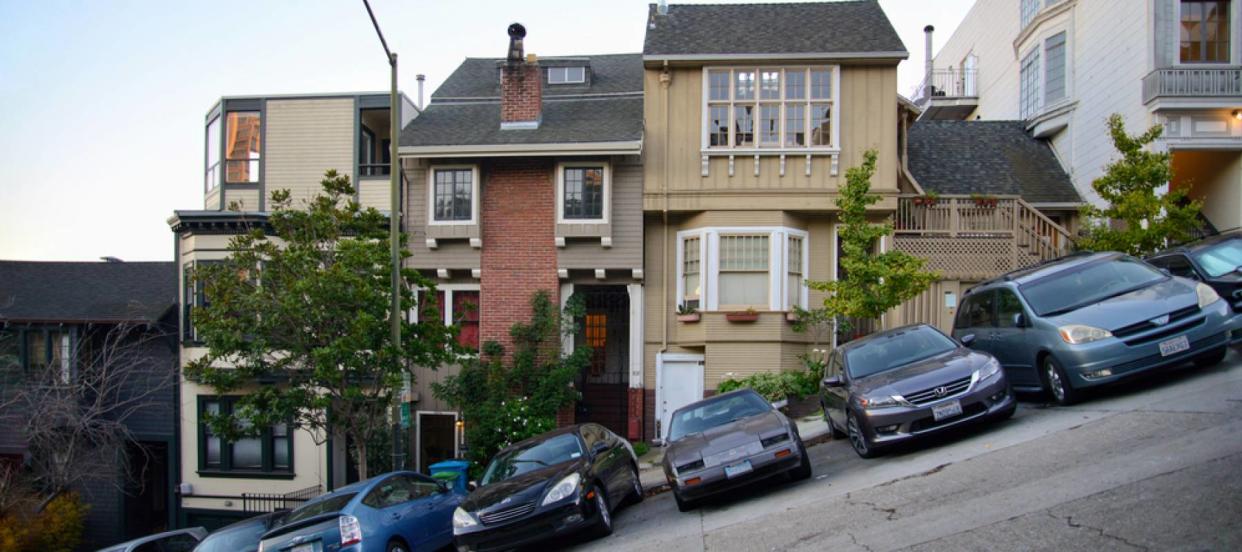‘Clawing their way back’: San Francisco has become known for rampant crime, empty office towers and eye-watering rents — but the city has a plan to turn things around. Will it work?

California’s once-glorious Golden Gate City is a shadow of its former self.
Office towers sit empty, hotels are closing their doors, shops are boarded up to prevent crime and San Franciscans are ditching their beloved city in search of safe and affordable housing elsewhere.
Don’t miss
Thanks to Jeff Bezos, you can now use $100 to cash in on prime real estate — without the headache of being a landlord. Here's how
Find out how to save up to $820 annually on car insurance and get the best rates possible
Finish 2023 stronger than you started: 5 money moves you should make before the end of the year
And the California city’s decline hasn’t gone unnoticed. Business leaders have been open about the problems eating into their bottom lines, such as the shrinking population and the lack of affordability in both commercial and residential properties.
There’s also been a surge in crime, which has shocked Americans nationwide. Podcaster Joe Rogan even went so far as to call San Francisco a “failed state” over the “next level” lawlessness and disorder plaguing the city.
The California city has had a rough go of it in 2023 — but it has come up with a solution. Will it be enough to draw residents and businesses back and restore San Francisco to its former glory?
A slow and unsteady recovery
San Francisco’s challenges grew more pronounced during the COVID-19 pandemic, but they were brewing long before.
Heading into the pandemic, the city was riding high on a decade-long tech boom in Silicon Valley. Its economy was thriving and thanks to high demand for the limited supply of housing (due to restrictive policies that limited new housing development), rent in the city soared to some of the highest rates in the country.
When the COVID-19 pandemic hit, San Francisco’s tech-heavy workforce embraced remote work — and many moved away from the downtown core to see out the pandemic from homes with a little more space and a yard. From 2020 to 2021, the city’s population fell to its lowest level since 2010, erasing a decade’s worth of population growth in a single year.
Since then, San Francisco’s return to the office has been slow. According to real estate company Savills, San Francisco had one of the lowest office availability rates in the U.S. before the pandemic at 9.5%; however, vacancy is now at 36.3%, up from 35.1% reported last quarter.
This major drop in in-office workers, combined with a trend of people seeking more affordable housing elsewhere, has contributed to the diminishment of the city’s once-buzzing downtown core, which major retailers and hotels have blamed for their losses and led to them bidding farewell to the city.
Another factor that caused retailers, in particular, to ditch downtown San Francisco during the height of the pandemic was crime — in particular, a huge surge in shoplifting incidents. While retail crime levels have since receded, many retailers, like Whole Foods, Walgreens and Nordstrom shuttered stores when things got bad.
Read more: Owning real estate for passive income is one of the biggest myths in investing — but here's how you can actually make it work
Bringing residents back
All of those issues have made the Golden Gate City a less desirable place to live and work. But, the city has big recovery plans — starting with housing availability.
A recent Wall Street Journal article detailed how San Francisco is planning to build more apartments to bring residents back and inject life back into the local economy. So far, 10 office-to-residential conversion plans have been submitted to the city in various neighborhoods, which, if approved, would add more than 1,250 units to the city’s housing inventory.
In addition, local property developer Bayhilll Ventures announced plans in November to build a new 71-story skyscraper in the city’s ailing financial district. If approved, the development will create 672 for lease apartments, with at least 10% being designated as affordable.
Property developers are hoping to tap into positive trends in the San Francisco rental market, where vacancies declined to 7% in November, compared with a pandemic high of 12% in 2020, per CoStar.
Sean Burton, chief executive of Cityview, a Los Angeles-based rental-apartment firm that owns two San Francisco properties, told the WSJ rents have been “clawing their way back” as workers return to the office a few days a week. And it seems property developers are ready to capitalize on that.
While this is good news for the city, there is a catch — the city has reduced its requirements of developers to provide affordable housing, likely to entice them back to the region. Affordable housing advocates grumbled at this, according to the WSJ, but acknowledged the move would jump-start the broader housing market.
If the city’s new focus on multi-family housing units have the desired effect of bringing residents back to San Francisco, that should help to revive the downtown core — bringing workers back to office towers and consumers back to retail spaces — which is good news for both San Franciscans and the local economy.
What to read next
Commercial real estate has outperformed the S&P 500 over 25 years. Here's how to diversify your portfolio without the headache of being a landlord
Millions of Americans are in massive debt in the face of rising rates. Here's how to get your head above water ASAP
Rising prices are throwing off Americans' retirement plans — here’s how to get your savings back on track
This article provides information only and should not be construed as advice. It is provided without warranty of any kind.
